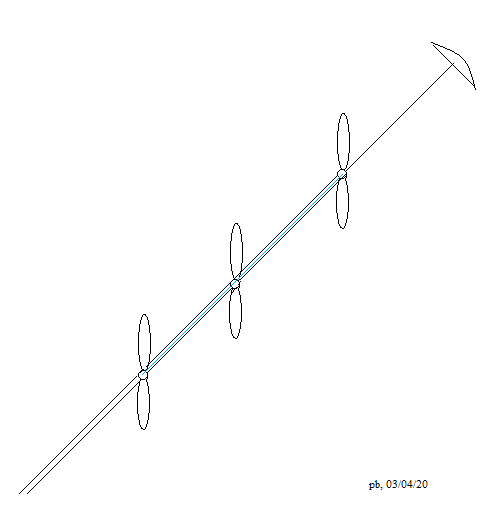The cosine cubed factor (see the simplified formula in the end of the paper, page 1532) concerns all AWES. For example a crosswind kite flying by an average elevation angle of 30° will have a cosine cubed factor of 0.65. You rightly point “that the higher the elevation angle, the greater the cosine cubed losses”, leading to the low (and correct) values you mention.
The problem is that AWES face two opposite requirements: flying, and generating. For the last a low elevation angle is required, but for flying it can be the reverse. As a result an AWES is a compromise between these requirements.
The solutions you propose lead to a likely optimal generation efficiency, but the lifting kite would make the full flying and lifting job, unlike the original devices that also provide some lift.
Moreover these solutions, and particularly the added frame and the bevel gears (superturbine variant) or universal joints, add cost and weight.
Another possibility sketched on Towards a crosswind version of Kiwee? is connecting the angle pulleys (to adjust the angle as for Kiwee) close to the hubs of the respective propellers with a rope drive then to the ground with another rope drive in continuation. The frame is only a bar connecting the propellers. Note that such a device can also be tilted in order to provide some lift, but with losing efficiency by cosine cube.
